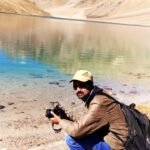Bishnupur
Home/Best Of Bengal/ Bishnupur
Offbeat weekend in Bishnupur
Bishnupur weekend tour
20% DISCOUNT
on all packages
Flip to avail
Till 31st December 2020
Coupon Code
472e17
Mailor whatsApp this code along with your details to avail discount on all packages
2 nights 3 days
- AC Room
- Breakfast, Lunch, Evening Snacks, Dinner
- Pickup and dropfrom Barbil to Barbil
*Excluding First day Breakfast,Guide and Porter charge
3 nights 4 days
- AC Room
- Breakfast, Lunch, Evening Snacks, Dinner
- Pickup and dropfrom Barbil to Barbil
Sight seeing in Bishnupur
- how to reach from kolkata
- Accomodation
- Fooding
You would love the restaurant if you are a Bengali as the in-house restaurant serves with all kinds of sumptuous Bengali food. Apart from that you can also try out Chinese and Moghlai food.
Tour Plan Itinerary
Offbeat weekend Exclusive Package
2 Night 3 Days
DAY ONE :
Pick-up from Barbil Rail Station at 1 pm.
Lunch at hotel
Visit
1. Kiriburu Hill Top / Sunset Point (the land of seven hundred hills)
Back to Hotel
Take Evening Snacks & Dinner.
DAY TWO :
Breakfast 8.30am. at Hotel
Visit -
1.Murgamahadev Temple & Waterfalls
Back to hotel & take lunch then visit
2. Jateswar Forest & Temple with Waterfalls
Back to hotel.
Take evening snacks & Dinner.
DAY THREE :
Breakfast 8.00am. at Hotel,
Visit -
1. Jhikra Waterfalls
2. Pacheri Waterfalls
Back to Hotel.
Lunch at 12 pm,
Drop to Barbil Rail Station within 1.15 PM.
Package Includes:
1. Room
2. Food (Breakfast, Lunch, Evening Snacks, Dinner)
3. Car: Pickup-Drop (Barbil to Barbil) with all sightseeing (as per Itinerary)
Package Excludes:
1.First day breakfast
2. Guide charge
3. Porter charge
Offbeat weekend Exclusive Package
3 Night 4 Days
DAY ONE :
Pick-up from Barbil Rail Station at 1 pm.,
Lunch at hotel,
Visit -
1.Kiriburu Hill Top / Sunset Point (the land of seven hundred hills)
Back to Hotel
Take Evening Snacks & Dinner.
DAY TWO :
Breakfast 8.30am. at Hotel,
Visit -
1.Murgamahadev Temple & Waterfalls
Back to hotel & take lunch then visit
2.Jateswar Forest & Temple with Waterfalls
Back to hotel
Take evening snacks & Dinner.
DAY THREE :
Breakfast 8.30am. at Hotel
Visit -
1.Jhikra Waterfalls
2.Pacheri Waterfalls
3.Fulbari Forest
4.Pundool Waterfalls
5.Karo River
6.Swapneswar Temple
OR
1.Jhikra Waterfalls
2.Pacheri Waterfalls
3.Gorubera Falls & Stone Curve
Lunch (Packed) at pundool or others site.
Back to Hotel.
Take evening snacks & Dinner
DAY FOUR:
Take your leisure time at hotel
Breakfast 9am
Lunch at 12 pm
Drop to Barbil Rail Station within 1.15 Pm
Package Includes:
1. Room
2. Food (Breakfast, Lunch, Evening Snacks, Dinner)
3. Car: Pickup-Drop (Barbil to Barbil) with all sightseeing (as per Itinerary)
Package Excludes:
1.First day breakfast
2. Guide charge
3. Porter charge
Best time to visit
Nearby places
Panchmura (23 km North West of Bishnupur)
Joypur and Gokulnagar (15 km and 18 km east of Bishnupur)
Chenchuriya Eco Park (27 km west of Bishnupur)
Joyrambati Kamarpukur (57 km east from Bishnupur)
What to shop at Bishnupur
Social life
For tourists interested in the local life of the place, it is important to note that Meghataburu is inhabited mainly by the local Munda tribes. Other tribal communities of Kiriburu and Meghataburu are the Majhis, Orao, Soren, Hasa, and Tirki.
Package starting from
INR 5500.00
Our happy clients say

Good place to stay, effecient hospitality. Wel maintained.
ANIRBAN RAO
Service
